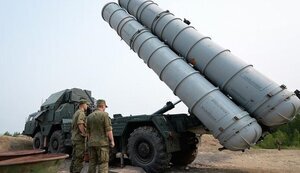Russia transfers air defense equipment from St. Petersburg to Ukraine, - media

Russia is transferring air defense systems and anti-aircraft missiles from St. Petersburg to Ukraine.
The Finnish publication Yle writes about this with reference to the satellite images it received and an expert's comment, Censor.NET reports.
Satellite images obtained by Yle show that Russia is firing a large number of anti-aircraft missiles in the direction of Ukraine, particularly from St. Petersburg, one of the most important areas for Russian air defense.
Thus, in the summer, both launchers and missiles disappeared from the base in the Zelenohirsk region on the Karelian Isthmus, northwest of St. Petersburg. The publication notes that the transfer of equipment has not previously been publicly reported either in Russia or in Western countries.
As Yle writes, St. Petersburg has long been surrounded by a protective ring of 14 air defense bases. Now several of them are empty.
Military expert Marko Eklund, who analyzed satellite images at the request of the publication, said that equipment has disappeared from 4 bases. In addition, anti-aircraft missile equipment was moved from other bases around St. Petersburg during the summer, most likely towards Ukraine.
According to Eklund, the transfer of equipment is unlikely to significantly weaken the anti-aircraft defenses of St. Petersburg, since the removed weapons are old and are no longer needed by Russia for defensive purposes. However, in the war in Ukraine, even old anti-aircraft missiles still find use, as Russia lacks modern high-precision weapons.
Yle purchased satellite images from commercial operators, supplementing them with images from Google Earth Pro.
In the latest pictures taken in August and September, the most obvious changes can be seen southwest of St. Petersburg, where two anti-aircraft batteries have disappeared. All launchers have been removed from the missile battery near the village of Kerstovo. Another battery is located one and a half kilometers to the northeast, which was also completely destroyed. Only the equipment of the radar station remained there.
Thus, only two of the regiment's four batteries remained in place. At the same time, about 25 missile containers, possibly containing 100 missiles, were removed from one of the two remaining batteries. They also significantly moved equipment from the base to the southeast of St. Petersburg.
The newspaper speculates that even more equipment was removed from the Leningrad region, but it was unable to obtain the latest satellite images of all the batteries.
Most of the anti-aircraft missiles remaining in the region belong to the S-400 missile system. The expert believes that the removed equipment mainly belongs to the old S-300 system. The main difference between the new and old systems is that the S-400s have twice the range of their predecessors.
Eklund believes that the weakening of anti-missile defenses on the outskirts of St. Petersburg is related to Russia's need for missiles for the war with Ukraine.
In the past, Russia is believed to have flown missiles to the front from bases closer to Ukraine and from areas considered less important than St. Petersburg. For example, Eklund used satellite images to monitor an air defense base in Voronezh, in central Russia. Half of its missile fleet was gone by May, just months after the invasion of Ukraine began.
Since the anti-aircraft missiles of the old S-300 system are being decommissioned in any case, Russia may have decided to use as many such missiles as possible against Ukraine, the publication believes.
